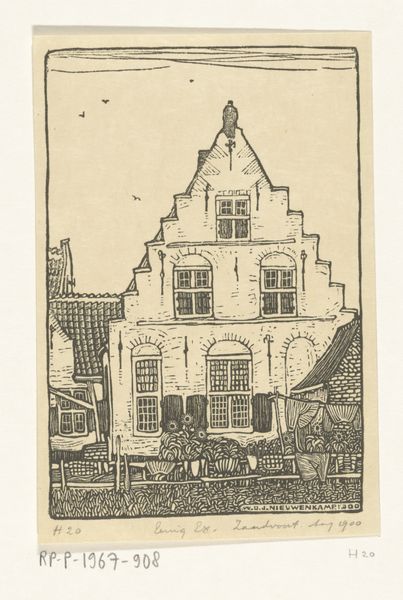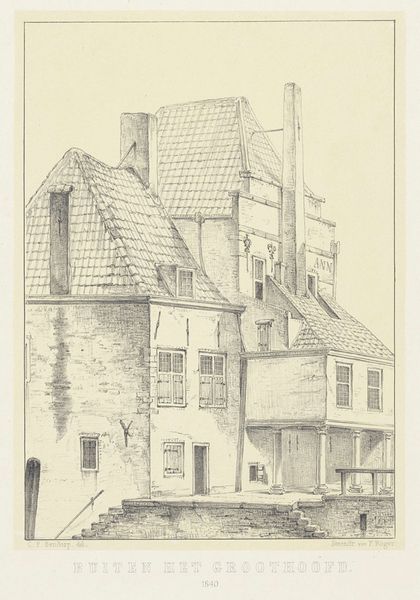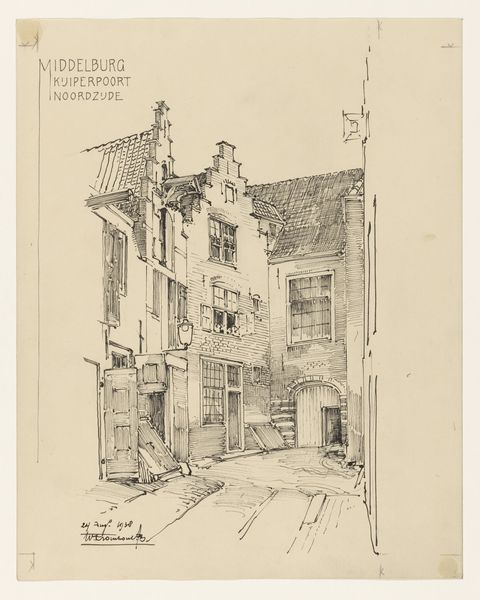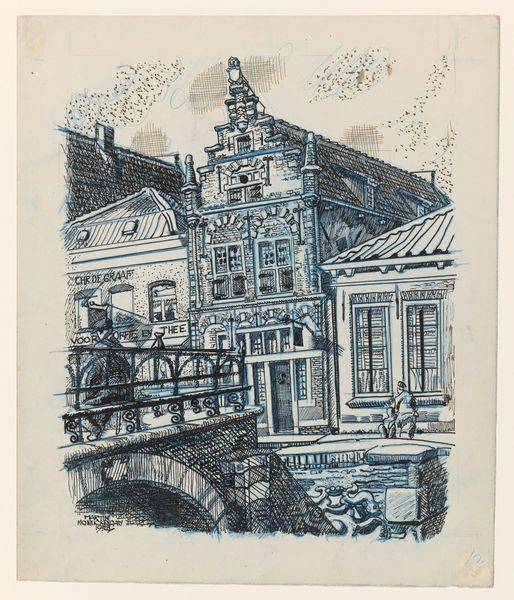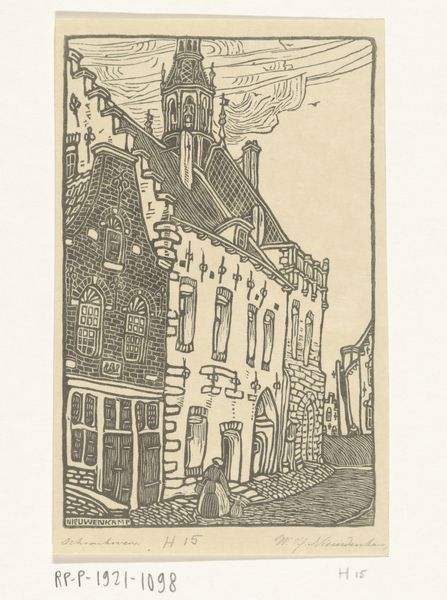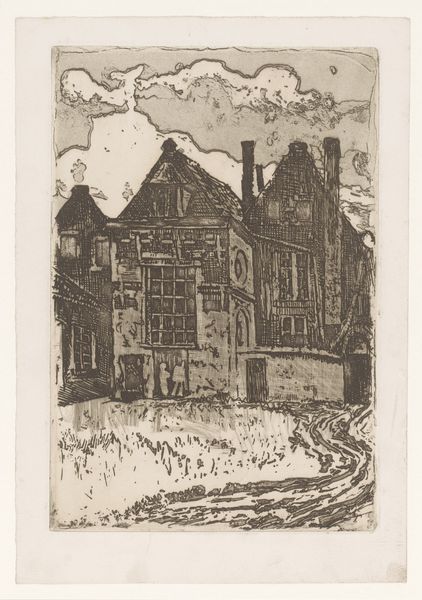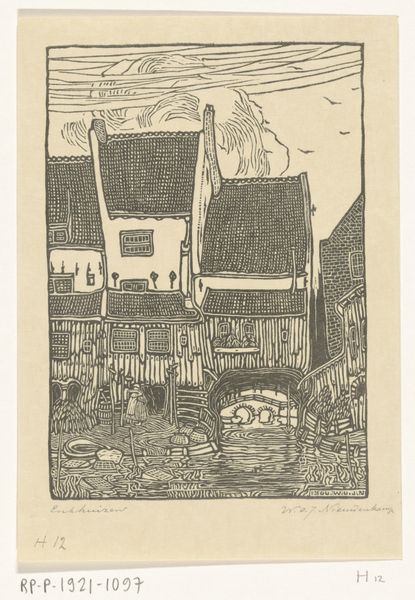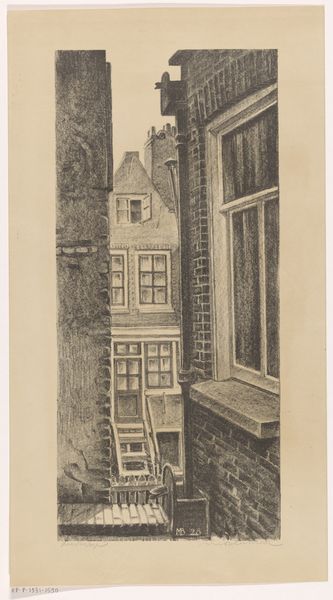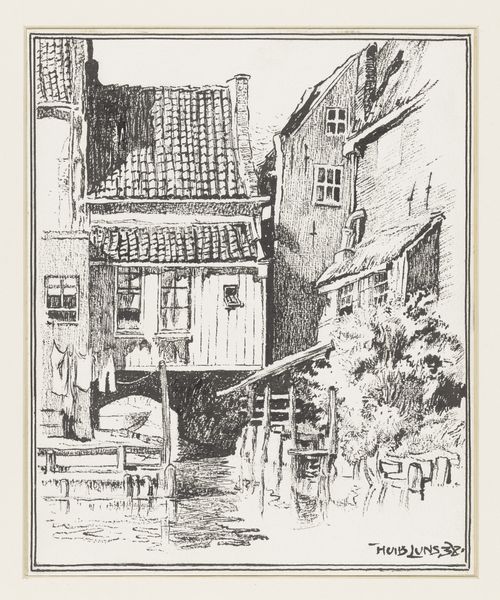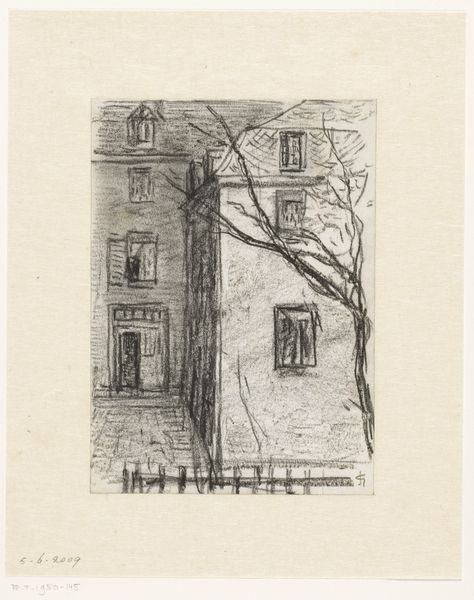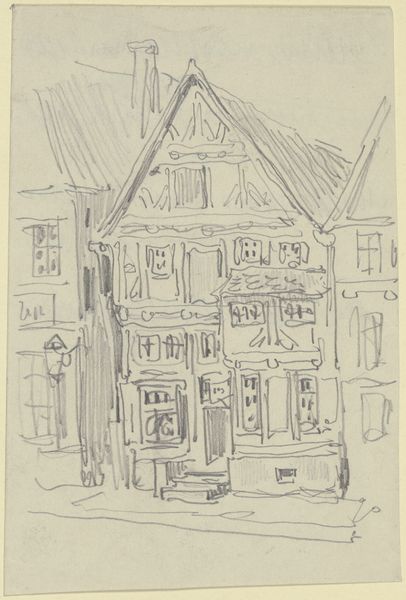
drawing, ink
#
drawing
#
ink
#
geometric
#
cityscape
#
modernism
Dimensions: height 361 mm, width 288 mm
Copyright: Rijks Museum: Open Domain
Curator: This energetic ink drawing captures the east portal of St. Nicholas Church in Monnickendam. Martin Monnickendam created it in 1938. What’s your immediate impression? Editor: Angular, evocative, yet also somehow peaceful. The hatching gives it such vitality, but the stillness of the architecture juxtaposed with the figure leaning on his bike lends an air of quiet contemplation. Curator: Absolutely. The linear quality and geometric shapes employed lend themselves to a modern perspective of the Dutch cityscape, reflective of architectural interests during the period. What architectural or symbolic motifs draw your attention? Editor: Definitely the doorway. Throughout history, doorways hold immense significance. They represent not only a passage between physical spaces but also a transition, a gateway between worlds. We're looking at an east portal, a position resonant with the rising sun, often linked to concepts of rebirth and spiritual illumination. The architect's geometric patterns draw from earlier eras while gesturing to what was considered a modern vision, capturing social and creative memory. Curator: You've touched upon a rich layering of symbolic potential here, and you’re right. East-facing orientations carry weight in cultural contexts, particularly where church architecture is involved. Furthermore, I can't help but notice the person at the lower right, almost like a bridge to our present day, making this seem like an artwork accessible in its everyday theme. How do you feel about his integration? Editor: He brings scale and relatability. His inclusion helps us map our own human experience onto this rendering, allowing an entryway to the grand structure that might seem daunting without him. There's also the bicycle: a modern, commonplace element, its inclusion democratizes the artwork. It suggests this sacred site also occupies space in the rhythms of daily life. It also lends the art the familiar charm of a period scene, making one feel nostalgic even if we’ve never experienced this setting before. Curator: Very well put! Thank you. That balance you highlighted certainly enhances our connection to the artwork. Editor: Indeed. Thanks for unveiling all those fascinating elements in the work!
Comments
No comments
Be the first to comment and join the conversation on the ultimate creative platform.
